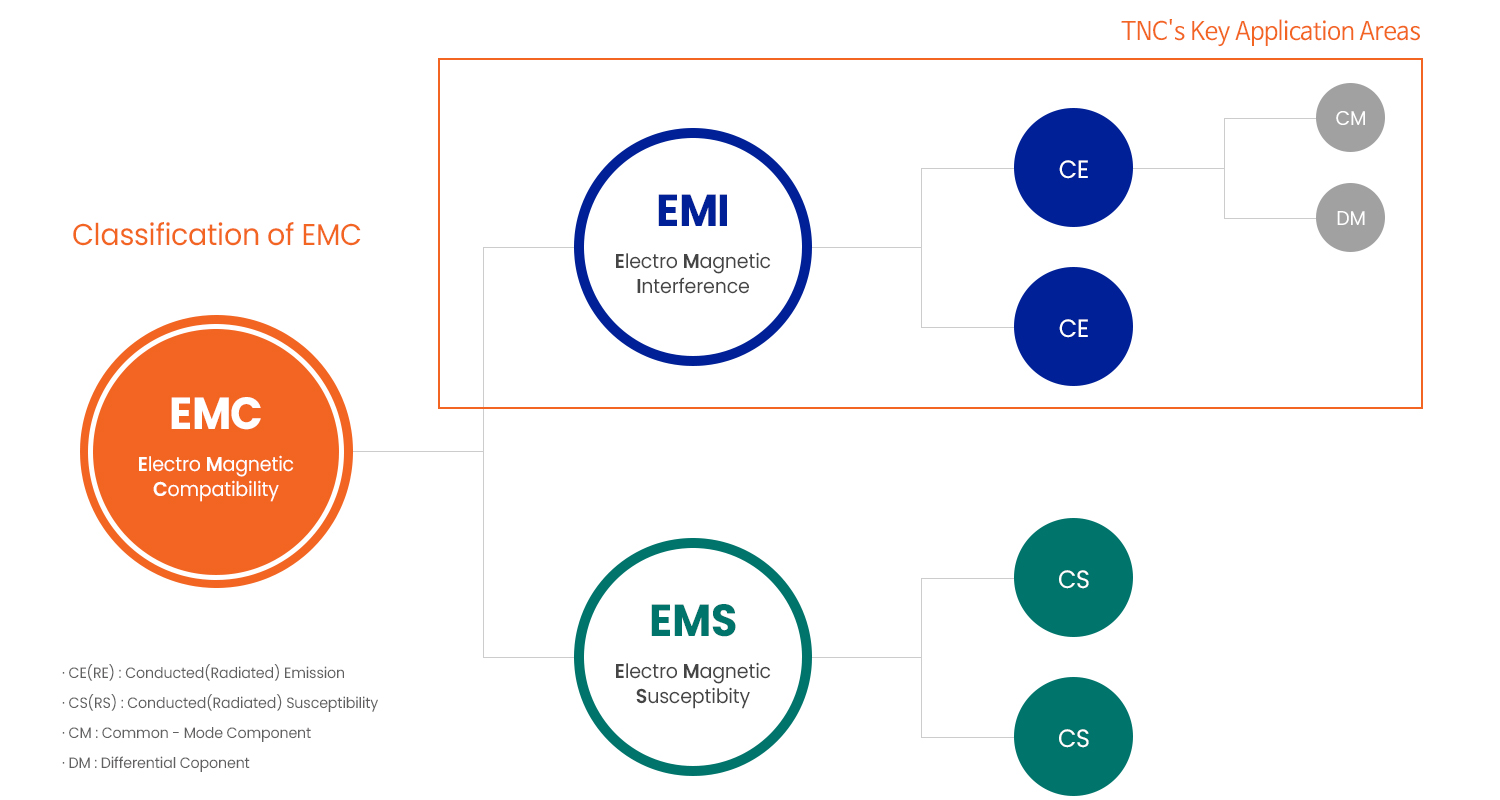EMC Information
We are pleased to provide detailed information
on TNC Co., Ltd.’s EMI technology capabilities and solutions.
EMC (Electromagnetic Compatibility) refers to the ability of electrical and electronic systems to operate compatibly within an electromagnetic environment without causing or falling victim to electromagnetic interference.
There are many issues associated with electromagnetic environments caused by electronic devices, such as channel cross-interference in wireless communications, inefficiencies in frequency spectrum usage, ghosting in broadcast signals, malfunction and safety concerns in computer-based systems like robots, and reliability issues in information and communications networks. Moreover, the impact of electromagnetic energy on humans and other living organisms has become a major focus of EMC concerns.
For example, television reception issues may result from signal reflections off tall buildings, transmission lines, or elevated structures—causing ghosting. In telecom networks, problems include mobile communication phase fading during transit or malfunction due to urban radio noise, as well as biological hazards posed to living beings.
EMC isn't just about countermeasures at the source of unwanted electromagnetic energy—it's also about enhancing the immunity of affected devices. This concept, aimed at finding harmonious solutions, gave rise to the field of environmental electronic engineering.
In short, EMC seeks to enhance immunity while reducing susceptibility to electromagnetic disturbances.
What was once considered merely an issue of radio noise has evolved into a broader environmental concern, due to the increase in electromagnetic energy emissions from growing use of electrical energy. In 1958, the IEEE formed a specialized group on radio frequency interference (GRFI), which later became the EMC Society, now hosting international conferences each year.
EMI (Electromagnetic Interference) is a term used to describe the unwanted electromagnetic waves that are directly radiated or conducted from electrical and electronic devices, which disrupt the electromagnetic reception capabilities of other devices.
According to the International Electrotechnical Commission (IEC), EMI is defined as: > “A situation where the reception of desired electromagnetic signals is obstructed by unnecessary electromagnetic signals or noise.”
EMI began gaining attention in the 1930s and, up to the 1950s, was mainly regarded within the scope of radio noise interference. In 1958, the Institute of Electrical and Electronics Engineers (IEEE) established the Group on Radio Frequency Interference (GRFI) to address two main types of interference:
Radiated EMI: interference emitted directly through electromagnetic radiation
Conducted EMI: interference that travels along power lines
With the explosive growth in electronic device usage and the advancement of digital and semiconductor technologies, EMI has extended its impact beyond simple radio interference. It now includes mutual malfunctions among precision electronic devices and biological hazards due to electromagnetic exposure—raising concerns about its effects on ecosystems and living organisms.
As a result, in 1973, the IEC formed Technical Committee TC-77 to specifically address EMC (Electromagnetic Compatibility) and to focus on regulating and evaluating electromagnetic environmental issues globally.

While there are slight differences between countries, most nations adopt the standards issued by the International Special Committee on Radio Interference (CISPR) as their national EMC regulations. In order to satisfy the optimal conditions for electromagnetic interference suppression and immunity performance, CISPR—composed of global experts—holds annual meetings to revise and update its standards.
The committee works to reflect the input of each participating country as much as possible, finalizing standards through voting procedures.
·IEC : International Electrotechnical Commission
·ISO : International Standardization Organization
·CISPR : Comite International Special des perturbation Radioelectrique
·CCIR. : Comite Consultatif International des Radio Communications
·CCITT : International Telegraph and Telephone Consultative Committee
·IEEE : Institute of Electrical and Electronics Engineers, Inc
·FCC : Federal Communications Committee
·NEMA : National Electrical Manufactures Association
·NBS : National Bureau of Standard
·VDE : Verband Deutscher Elektrotechnicker
·ANSI : American National Standard Institute
·EIA : Electronic Industries Association
·FAA : Federal Aviation Administration
·NSA : National Security Agency
·VCCI : Voluntary Control Council for Interference by information technology equipment